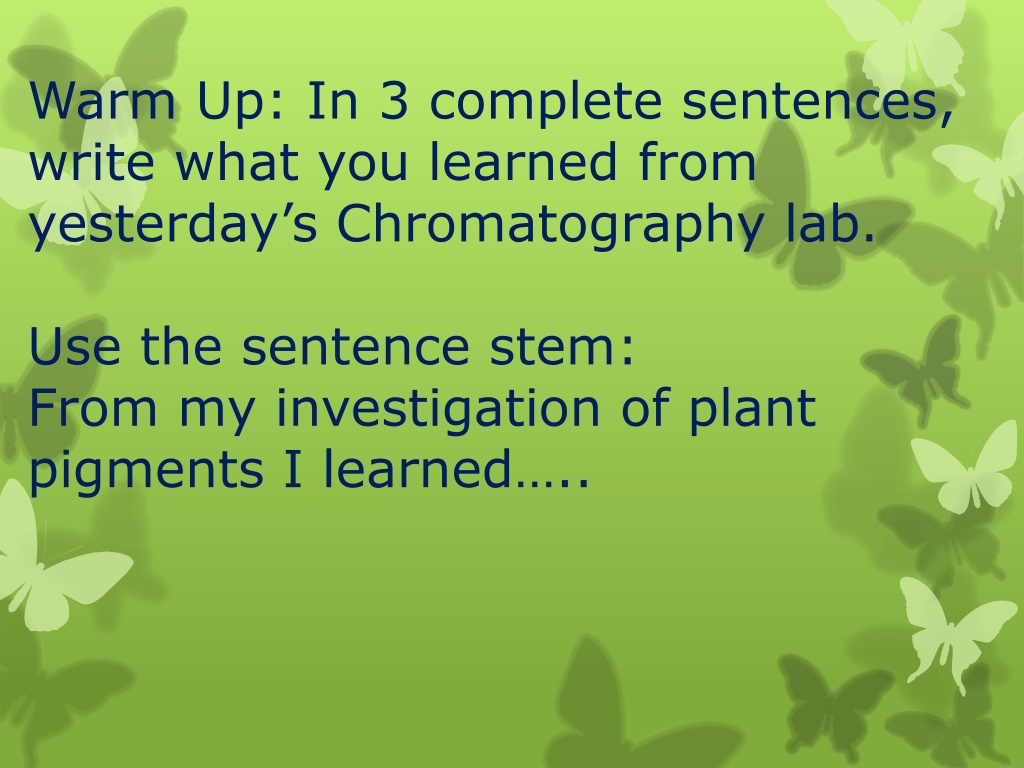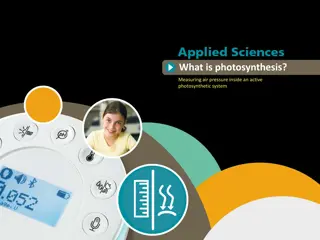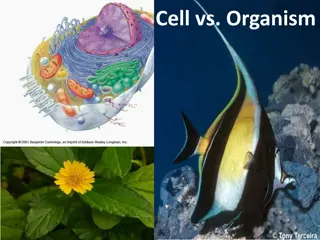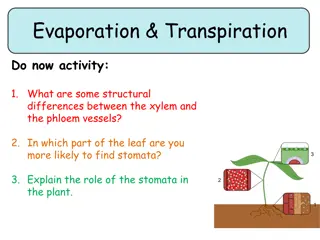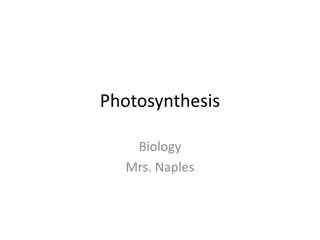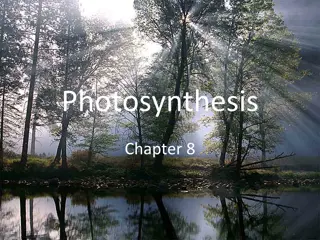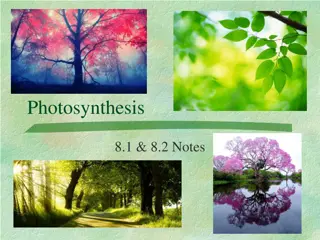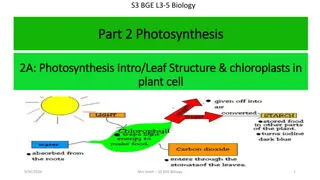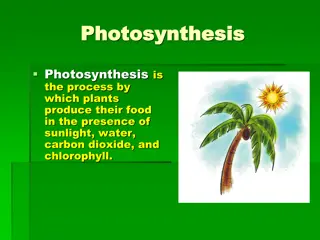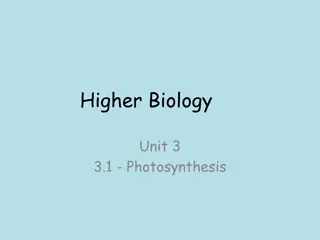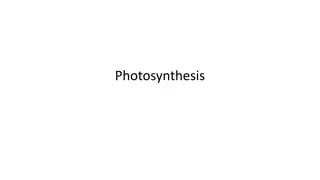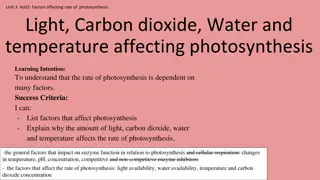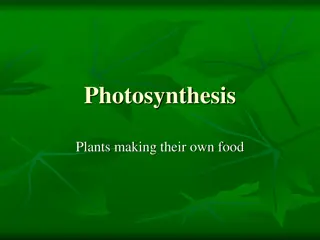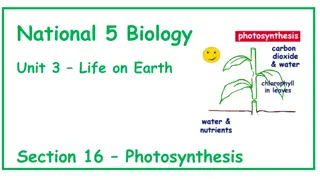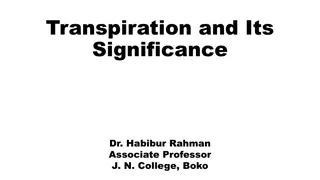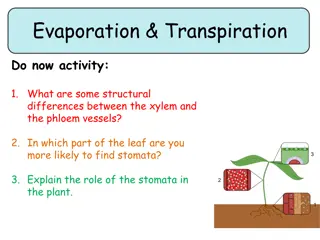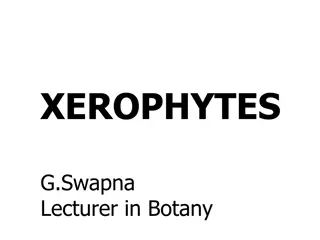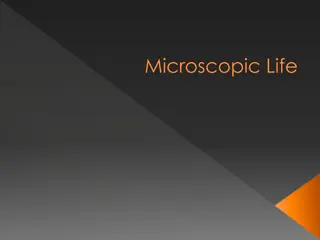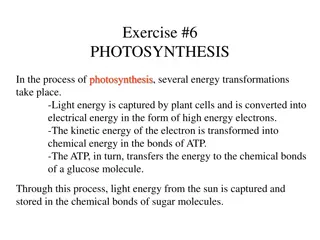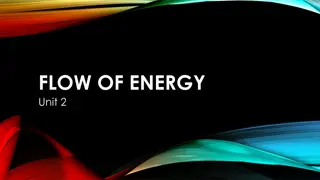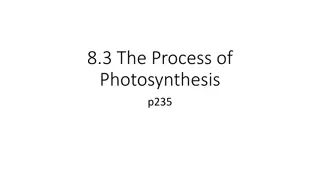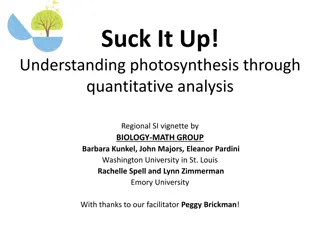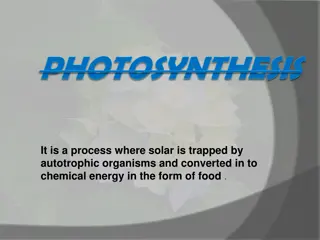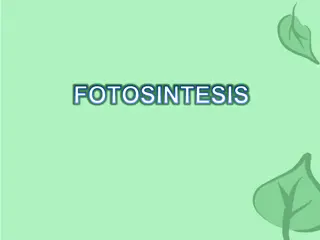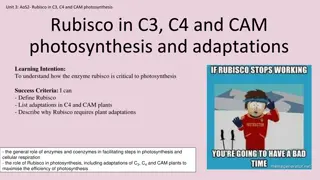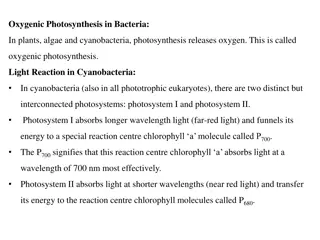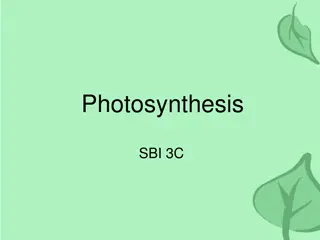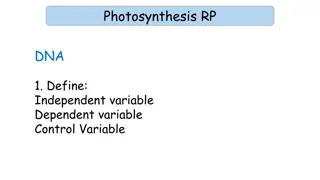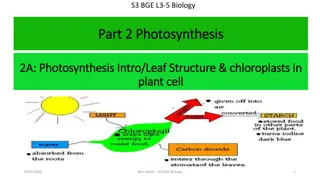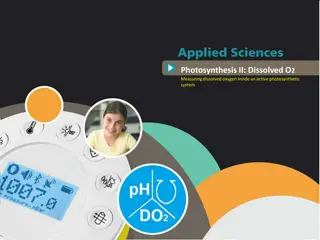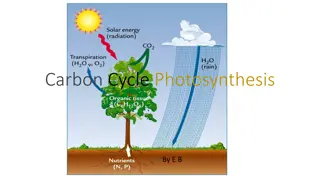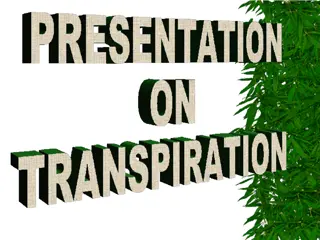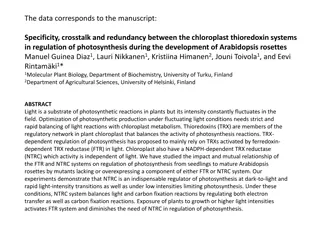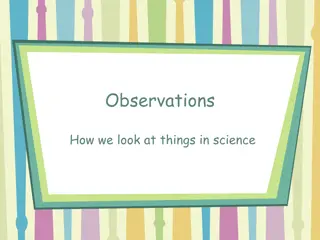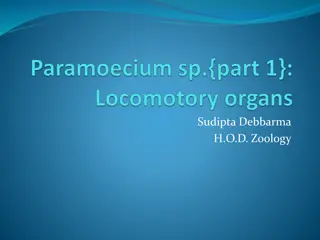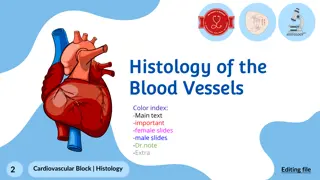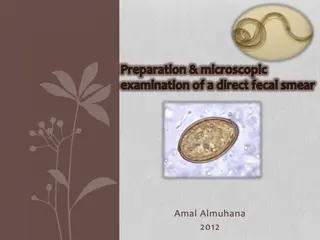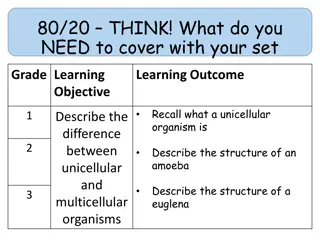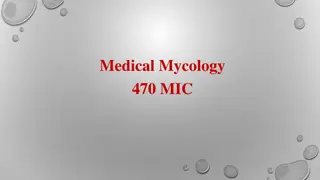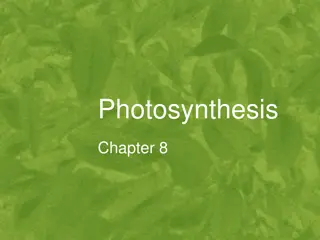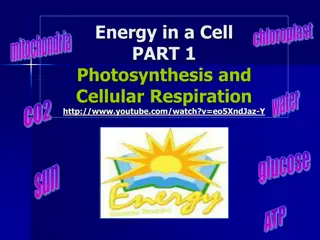Understanding Photosynthesis and Stomata through Microscopic Observations
Explore the role of stomata in photosynthesis by examining leaf surfaces under a microscope, identifying guard cells and stomata structures. Learn how stomata regulate gas exchange and impact plant growth based on their concentration and environmental conditions.
Download Presentation

Please find below an Image/Link to download the presentation.
The content on the website is provided AS IS for your information and personal use only. It may not be sold, licensed, or shared on other websites without obtaining consent from the author. Download presentation by click this link. If you encounter any issues during the download, it is possible that the publisher has removed the file from their server.
E N D
Presentation Transcript
Warm Up: In 3 complete sentences, write what you learned from yesterday s Chromatography lab. Use the sentence stem: From my investigation of plant pigments I learned ..
Title the next blank page of your journal: Photosynthesis and Stomata 1) Place a piece of clear tape on each dried nail polish patch. 2) Gently peel the nail polish patch from the leaf by pulling on a corner of the tape and "peeling" the fingernail polish off the leaf. 3) Place the taped nail polish patch to a very clean microscope slide. Trim away any excess tape. 4) Examine the leaf impression under a light microscope working your way up to 400x magnification. *Look for areas where there is no dirt, thumb prints, damaged areas, or large leaf veins* 5) Draw the leaf surface with any structures you can see at 400x magnification
Photosynthesis and Stomata Stomata special pores that allow passage of gases including water vapor; located on the lower epidermis (bottom) of the leaf High concentration of stomata = fast growth and wet climate Low concentration of stomata = lower rates of photosynthesis and growth or adaptations for dry weather. Guard cells jellybean shaped cells that surround stomata; expand or contract to open or close stomata; close when dehydrated to keep water in plant from escaping
Photosynthesis and Stomata The stomata are important to the process of photosynthesis. This is the site where carbon dioxide (a gas in the atmosphere) is taken into the plant and oxygen and water vapor is released. What were the other components that we discussed earlier, that were necessary for photosynthesis? Light (energy) and chlorophyll (found in the chloroplasts)
Photosynthesis and Stomata Now look back at your drawing and label any guard cells or stomata that you found.
